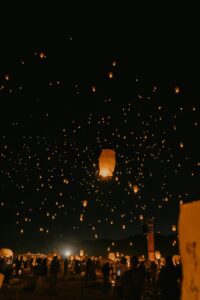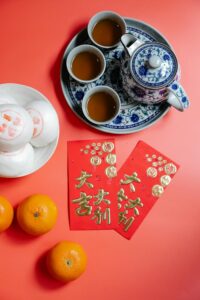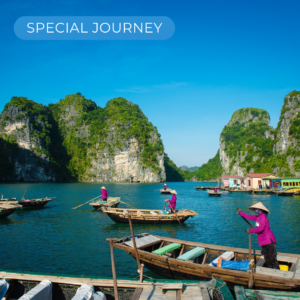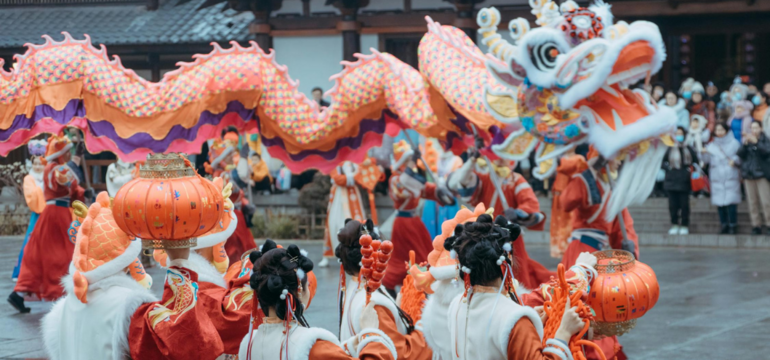With the new year just behind us for many of us, it is important to recognize how – and when – other cultures celebrate the new year.
Lunar New Year is a major cultural celebration for Friendship Force members and partners in Taiwan, South Korea, Malaysia, China, Singapore, the Philippines, Indonesia, and Vietnam. Each country celebrates the new year with unique customs, but the core theme remains unchanged. The  celebration of renewal and new beginnings is marked by the arrival of the first new moon of the lunar year, typically falling between late January and mid-February; 2025 sees the holiday fall on January 29. It is a time for family gatherings, honoring ancestors through various customs, and the seeking of good fortune for the start of the year.
celebration of renewal and new beginnings is marked by the arrival of the first new moon of the lunar year, typically falling between late January and mid-February; 2025 sees the holiday fall on January 29. It is a time for family gatherings, honoring ancestors through various customs, and the seeking of good fortune for the start of the year.
In Taiwan, Lunar New Year celebrations begin on the first of January. During this time many take part in the Sky Lantern Festival in Pingxi, watch a firework show at Taipei 101, and eat pineapple cakes (called fènglí sū) for good luck and fortune.
Chinese Lunar New Year, also known as Spring Festival, is an official public holiday that lasts 15 days and concludes with China’s Lantern Festival. Some of the key traditions include a traditional family dinner on January 28th, the handing out of Hongbao (Red Envelopes) containing money, which is a symbol of good luck, and the dragon and lion dance performance. These are a common performance during the festival as they are said to drive away bad luck.
Similar to Taiwan, Indonesia also begins its celebrations on January first. The holiday called Imlek shares many of the same traditions as the Chinese Lunar New Year like Lion Dances (called Barongsai) and giving money in red envelopes. Uniquely, Imlek money is given in even numbers to increase luck. Indonesians will also often eat Tumpeng, which is a cone-shaped rice dish.
 Vietnamese Lunar New Year, or Tết, falls around the same time as Chinese New Year. Tết lasts for three days but can also extend out for weeks in some areas. This celebration focuses on honoring ancestors through food and incense offerings as a sign of respect for those who have passed. Tết also features traditions like red envelopes (called lì xì in Vietnam), fireworks and parades, and serving traditional foods at family celebrations.
Vietnamese Lunar New Year, or Tết, falls around the same time as Chinese New Year. Tết lasts for three days but can also extend out for weeks in some areas. This celebration focuses on honoring ancestors through food and incense offerings as a sign of respect for those who have passed. Tết also features traditions like red envelopes (called lì xì in Vietnam), fireworks and parades, and serving traditional foods at family celebrations.
Korean Lunar New Year, called Seollal, lasts for three days as well but the majority of the celebrations fall on the first day. Traditional Seollal meals often highlight tteokguk, which is a rice cake soup that symbolizes the start of a new cycle in the coming year. Traditional outfits called hanbok are typically worn during celebrations where gifts are given and games are played. Several Asian countries celebrate New Year later in mid-April. This includes Nepal, Sri Lanka, Myanmar, Laos, Cambodia, and Thailand. One of the notable events during this time is the Songkran Festival in Thailand, which marks the traditional Thai New Year with water fights.
 As the Lunar New Year celebrations approach in 2025, why not join a Friendship Force journey to experience similarly rich traditions firsthand? For those considering travel to Vietnam or Cambodia in 2025, here are some helpful links to guide your journey:
As the Lunar New Year celebrations approach in 2025, why not join a Friendship Force journey to experience similarly rich traditions firsthand? For those considering travel to Vietnam or Cambodia in 2025, here are some helpful links to guide your journey:
- August 2025, Special Journey: Discover the History and Culture of Vietnam
- October 2025, Special Journey: Festival on the Mekong

